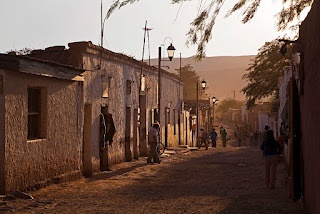The study focuses on one proposed type of geoengineering, known as a “stratospheric aerosol injection”, which involves sending up substances to the stratosphere that are known to have a cooling effect on the climate.
It finds that if only one country, region or hemisphere were to pursue this type of geoengineering, other parts of the world could face adverse consequences. For example, if only the northern hemisphere were to release aerosols, the Sahel in Africa and parts of India would have to cope with more droughts.
The research highlights that “geoengineering is going to require more global cooperation than has ever been attempted before”, another scientist tells Carbon Brief.
Mimicking volcanoes
Solar geoengineering, or “solar radiation management” (SRM), describes an array of methods – all of which remain hypothetical – for artificially reducing sunlight at the Earth’s surface in order to dampen global warming.
Proposed methods includes making clouds brighter, increasing the bubbles and spray behind ships and even sending giant mirrors into space.
It’s worth noting that while these proposed technologies may potentially be able to cool the planet, but they would not reduce the amount of CO2 in the atmosphere. SRM couldn’t, therefore, address all the impacts of climate change, including ocean acidification.
The new study, published in Nature Communications, investigates the potential physical side effects that could come about from artificially introducing aerosols into the atmosphere.
Research into the impact of major volcanic eruptions on global temperatures has shown that releasing certain aerosols into the stratosphere has an overall cooling effect on the planet. When a volcano erupts, it sends a cloud of ash high into the atmosphere. The sulphur dioxide released in the plume combines with water to form sulfuric acid aerosols, which can reflect sunlight.
Researchers have proposed that artificially introducing aerosols into the atmosphere, via a plane or a balloon, could have similar cooling effect.
A geoengineered world
Releasing aerosols from just one part of the world is likely to cause unwanted effects elsewhere, the new study finds. It uses modelling to simulate how an annual atmospheric injection of sulphur dioxide from both the northern and southern hemisphere could affect the climate between 2020 and 2070.
If aerosols were released just from the northern hemisphere, other parts of the world could face an increase in droughts, hurricanes, and storms, says lead author Dr Anthony Jones, an atmospheric scientist at the UK’s Met Office. He tells Carbon Brief:
“If solar geoengineering were to be deployed solely in the northern hemisphere, then the resultant changes would reduce precipitation in the Sahel, and other regions such as India, and reduce the number of storms in the North Atlantic basin.
“To put it short, northern hemisphere solar geoengineering would be good for the southeast US, the Caribbean, and Mexico in terms of dissipating storms, but be very bad for the Sahel. In contrast, solar geoengineering in the south would enhance precipitation in the Sahel, but would also enhance the number of storms in the North Atlantic.”
Read more at Unregulated Solar Geoengineering Could Spark Droughts and Hurricanes, Study Warns

No comments:
Post a Comment